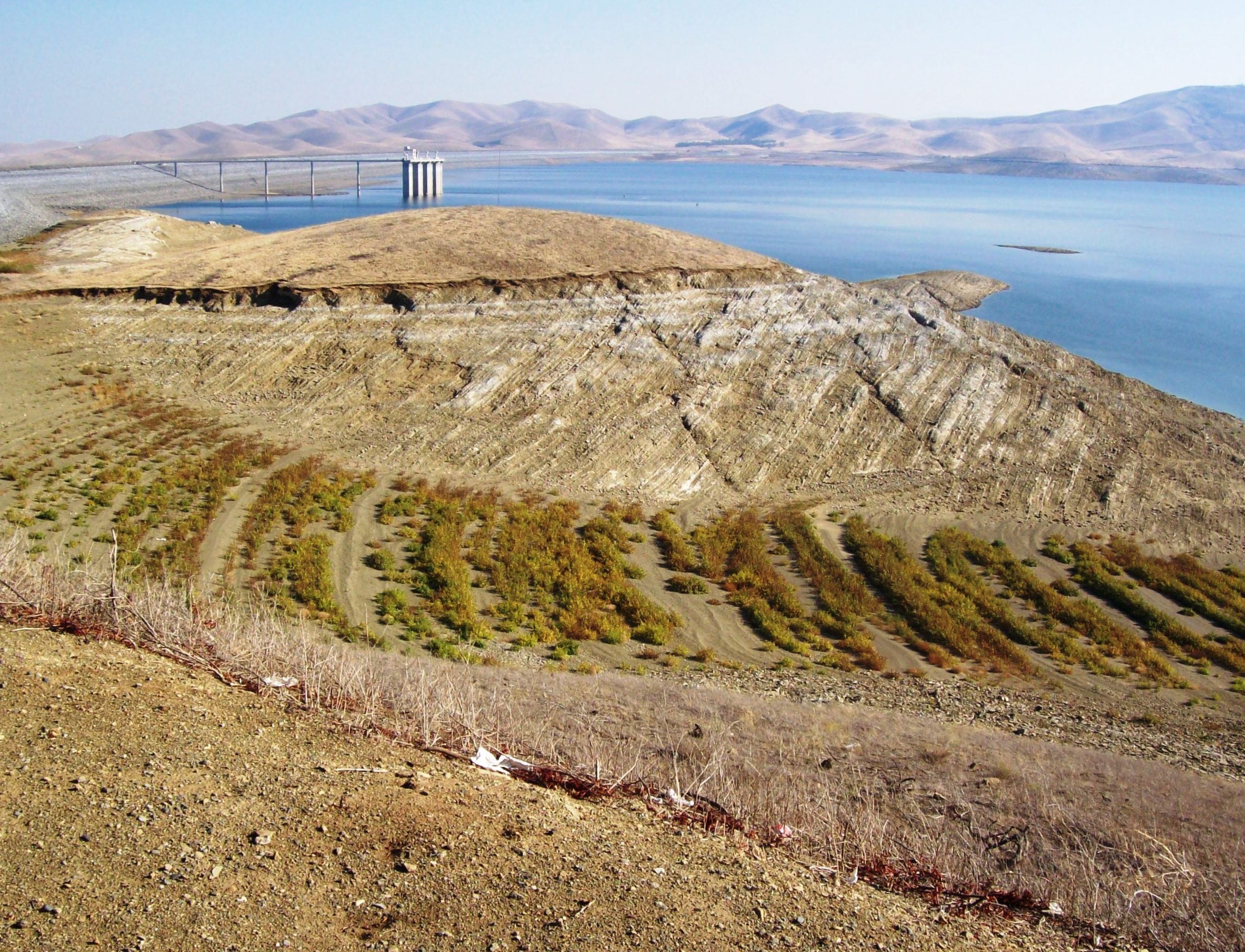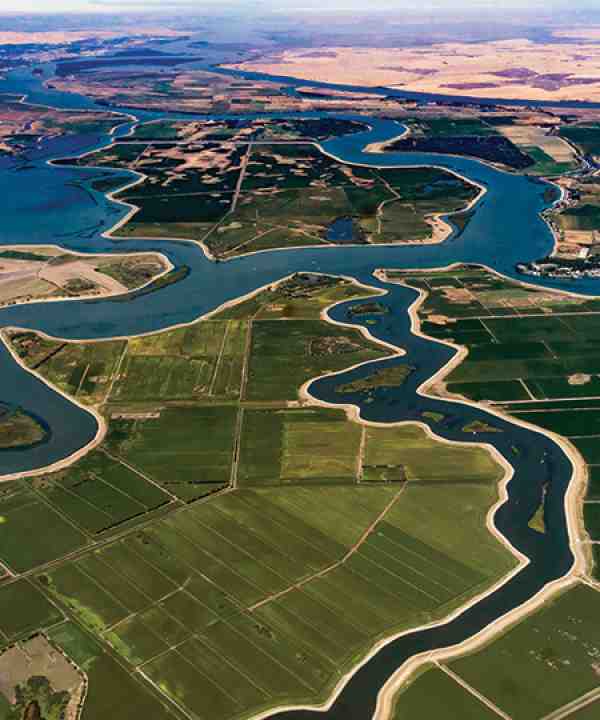September 03, 2019 | Water in the West | Insights
As with the stock market, climate change requires a diversified portfolio of solutions. California Gov. Gavin Newsom recently signed an executive order to develop a comprehensive strategy for making the state’s water system climate-resilient. The order calls for a broad portfolio of collaborative strategies to deal with outdated water infrastructure, unsafe drinking water, flood risks and depleted groundwater aquifers.
In a related study published earlier this year, Stanford researchers Newsha Ajami and Patricia (Gonzales) Whitby examined effective strategies to rising water scarcity concerns. Ajami is director of Urban Water Policy at Stanford’s Water in the West program and a hydrologist specializing in sustainable water resource management. Whitby is a recent Ph.D. graduate from Stanford’s civil and environmental engineering department and currently a water engineer at environmental consulting firm Brown and Caldwell. Below, they discuss their research and how a diversified water portfolio can meet the water needs of California into the future.

San Luis Reservoir, the fifth largest in California, stores water from the San Joaquin-Sacramento River Delta. Photo Credit: Flickr/mlhradio
How does a diversified water portfolio reduce risks associated with water supply?
Ajami: Developing a water supply portfolio means moving away from dependence on one water source such as imported water or groundwater in order to develop a number of other water sources by incorporating local and regional solutions including conservation and efficiency, water recycling and reuse, rainwater and stormwater harvesting and desalination. The golden rule in an investment portfolio is to have diversification which prevents short-term and long-term risks. The same rule applies to a diversified water portfolio. In order to minimize the risk of short-term and long-term challenges and disruptions due to failing infrastructure or climate change impacts including intensified droughts and floods, it is important to rely on more than one supply source and develop a water portfolio that is comprised of multiple water options in order to increase systematic flexibility and resiliency. In developing such a portfolio, utilities and regions should not only focus on the number of sources but also need to think about the capacity of each supply. Our team has developed a water reliance index which can help measure these goals at both the utility and regional level.
Whitby: A water supply portfolio is the combination of water supply sources available to a utility. Diversifying means we’re not putting all of our eggs in one basket, so if something happens to one of the supplies like a disruption to the physical infrastructure or a water quality concern or a cutback due to drought, we still have a portfolio of other options available. Water supply diversification should pursue different types of water sources such that each supply has different risks and also different strengths. For example, water reuse is typically considered a robust supply that is resilient to drought. Similarly, diversification means not only having many different water sources available, but also leveraging those sources to reduce stress on the more traditional supplies.
What key priorities would you expect California’s water resilience portfolio to focus on?
Ajami: A water resilience portfolio can look different from region to region as California faces different challenges, opportunities, risks and limitations across the state. It is important for regions to identify the value and risks of existing and potential water supply options and focus on projects that not only enhance access to clean water but also deliver broader environmental and societal benefits such as green infrastructure. In highly urbanized regions, solutions such as on-site reuse work well, while communities with lower densities may find a centralized recycling plant as a better solution. The state needs to recognize these parameters and provide regions with broad guidelines while enabling and encouraging development of collaborative regional strategies. A model similar to the Renewable Energy Portfolio comes to mind, where regional and a statewide water diversification portfolio goals are set and then incentivized.
In a recent study our team developed a cap and trade goal-based trading model that enables a region to reach their water diversification portfolio goals by working together and taking advantage of regional opportunities to develop a diverse set of water solutions. Such innovative system level solutions can help water utilities coordinate their efforts, overcome fragmentation and share both financial and water resources while also gradually adjusting their business model.
What role does climate change play in future planning?
Ajami: Climate change is magnifying many of our current water challenges. Intensified droughts and floods are demonstrating the limitations of our traditional infrastructure model such as dams and wastewater treatment plants. The shift in our hydrological cycle means the conventional ways we managed our complex water systems aren’t working. The new normal looks very different, as precipitation patterns have shifted, and we are receiving more rain than snow. Also due to higher temperatures, snow melts earlier and faster than before, depriving us from our natural reservoir that used to hold much of our summer supply. Sea level rise is threatening our coastal groundwater basins and wastewater treatment plants. Increased wildfires especially in urban/wildland interface is affecting water quality. Overall climate change is interrupting our water systems. This means climate change has to be front and center in every infrastructure planning process. Our 21st century infrastructure model should look very different from our 20th century model, incorporating more nature-based solutions that can increase our system's resiliency and flexibility.
Can this order also help fix California’s outdated drinking water infrastructure?
Ajami: Absolutely! Replacing and fixing our aging infrastructure requires a holistic approach and it should also include changing and revamping our funding and financial model. If you look at your energy or telephone bill there is a line item that provides funding to ensure access to telecommunication and energy infrastructure for rural and low-income communities. This model provides long-term sustainable and stable funding that is essential. This is exactly what we need in the water sector and what we do not have. Gov. Newsom has certainly identified access to clean water as one of his administrations major issues. His team has certainly tried to find resources to make it happen – which is a great first step – but I believe a model similar to energy and telecommunications sectors are needed to guarantee long-term sustainable and resilient solutions for every community in California.
Whitby: Definitely. Aging infrastructure is one of the risk factors affecting our water systems today. A fair amount of water is lost to system leaks before it even reaches customers. Incentives to diversify and strengthen our water portfolios provide an opportunity to not only retrofit and expand infrastructure, but also to re-invent and fortify our water system for the next century.
Based on your research what factors are necessary for successful implementation of a state-wide portfolio?
Ajami: Encouraging regional collaboration, system-level thinking and innovation especially in water governance and business models are essential elements of any state-wide water strategy. In response to some of our statewide water challenges, communities around California have started embracing alternative water solutions and diversifying their water portfolio by introducing demand side management strategies such as water reuse, stormwater and rainwater harvesting and desalinization among others. These new water sources are slowly disrupting the top-down model of the water sector and introducing more flexibility and resilience to local water systems, especially during droughts and other natural disasters. But these efforts are not often coordinated, and their implementation suffers from our outdated and fragmented governance models which need to be disrupted and changed.
Whitby: Collaboration and innovation. Collaboration because our water systems are inherently very fragmented with jurisdictions that don’t always overlap with municipalities, counties or other agencies such as regulators and land-use planners. Working together can open up doors to identify opportunities that are both locally minded and regionally relevant. Innovation needs to happen not only on the technology side but also in the form of creative governance and financing mechanisms to make the necessary changes possible.


![[Woods Logo]](/sites/default/files/logos/footer-logo-woods.png)
![[Bill Lane Center Logo]](/sites/default/files/logos/footer-logo-billlane.png)